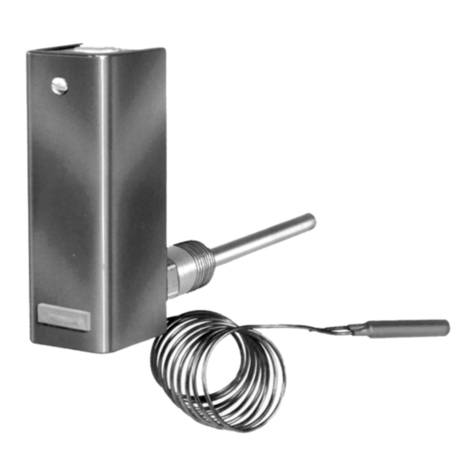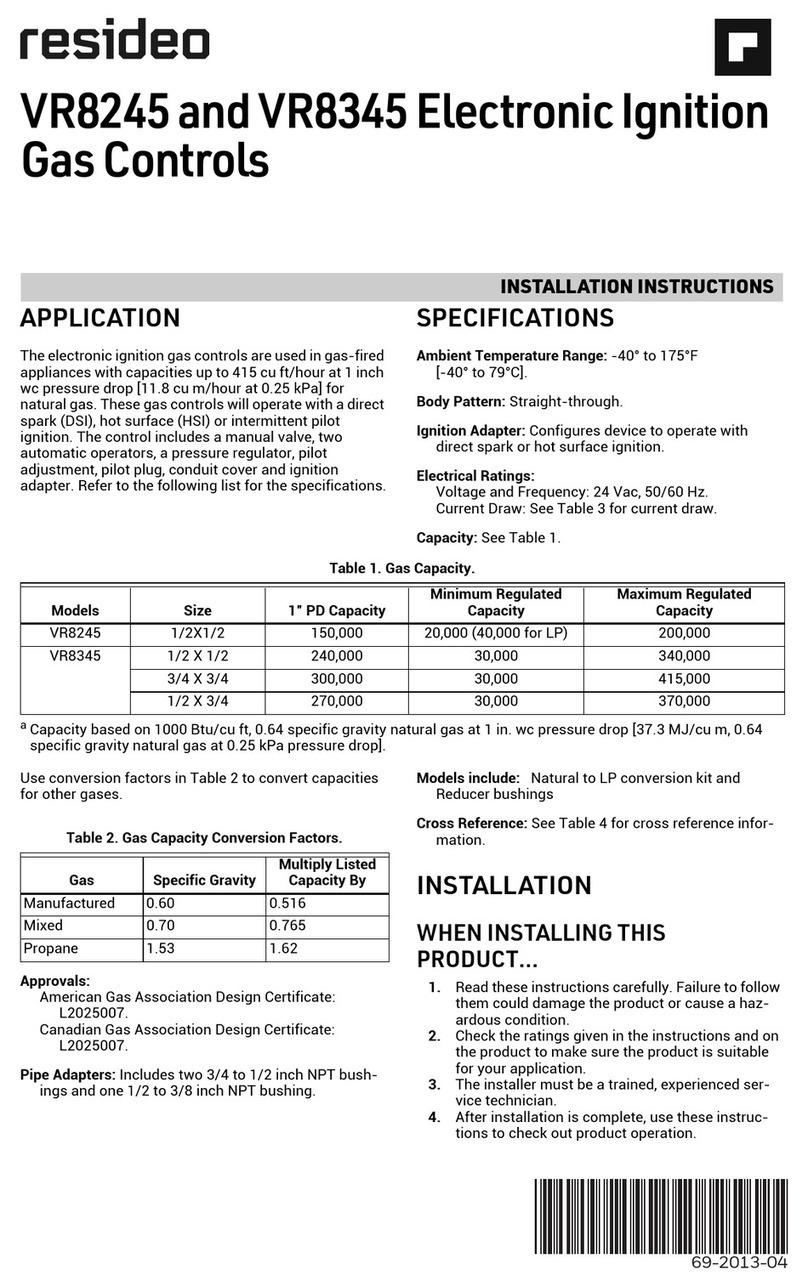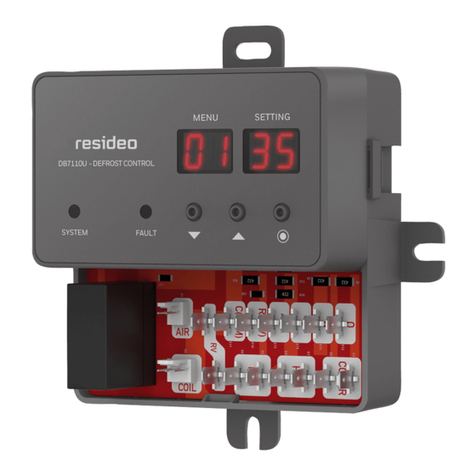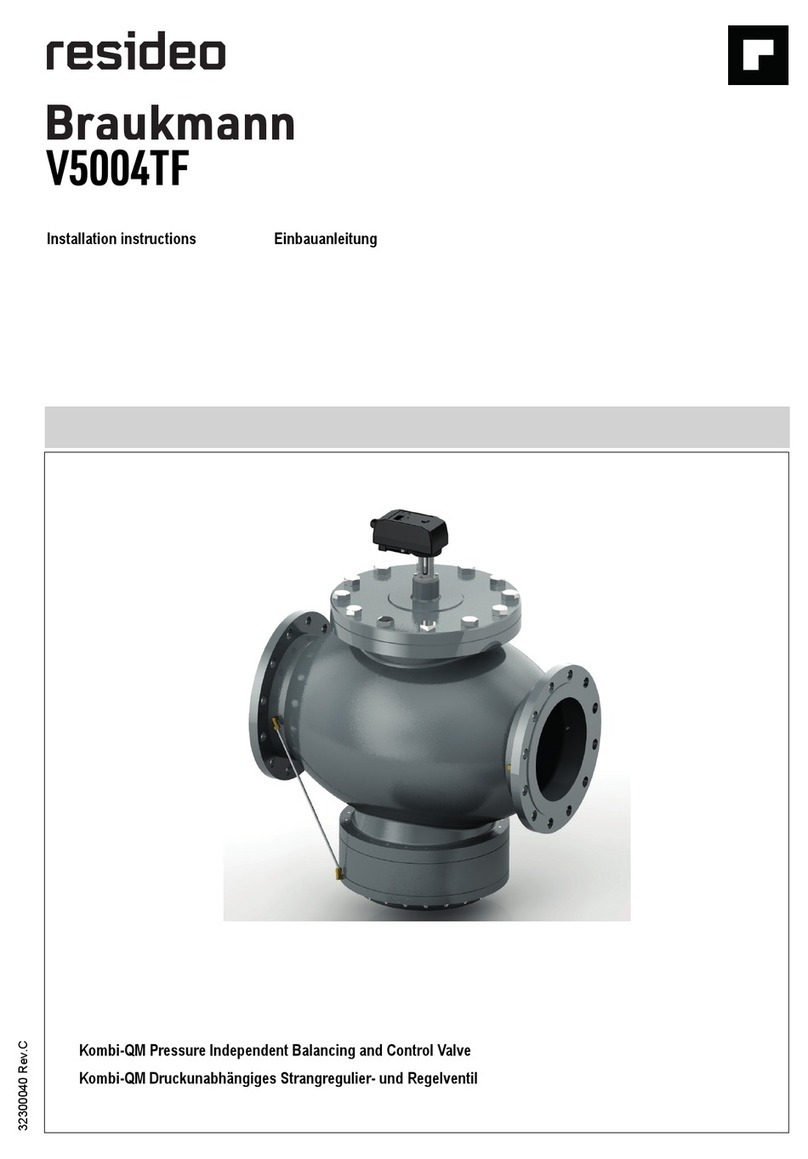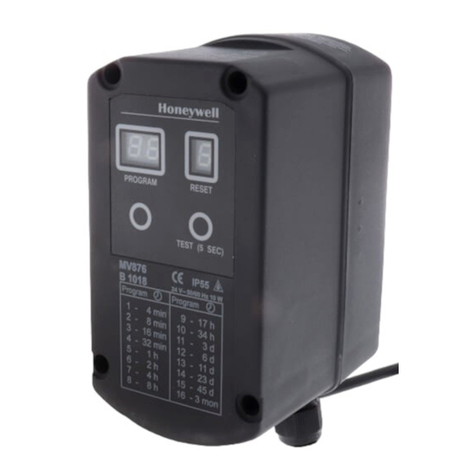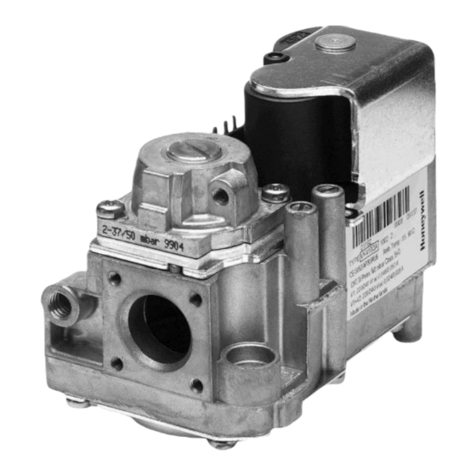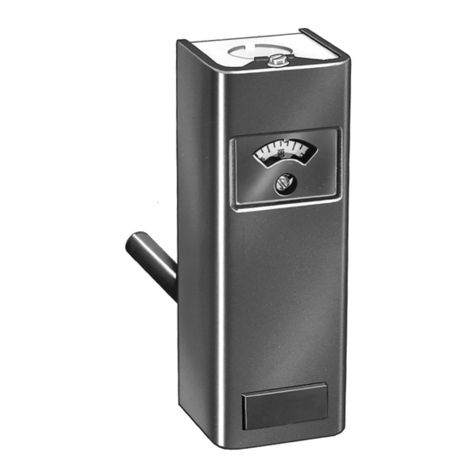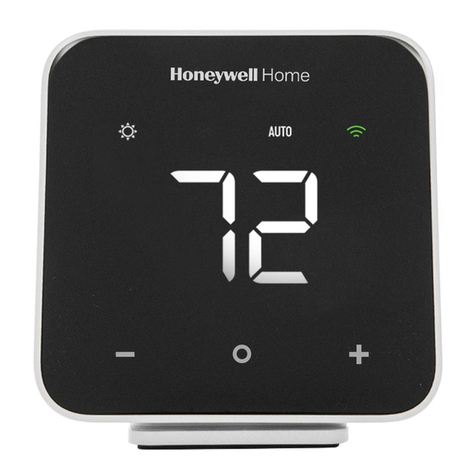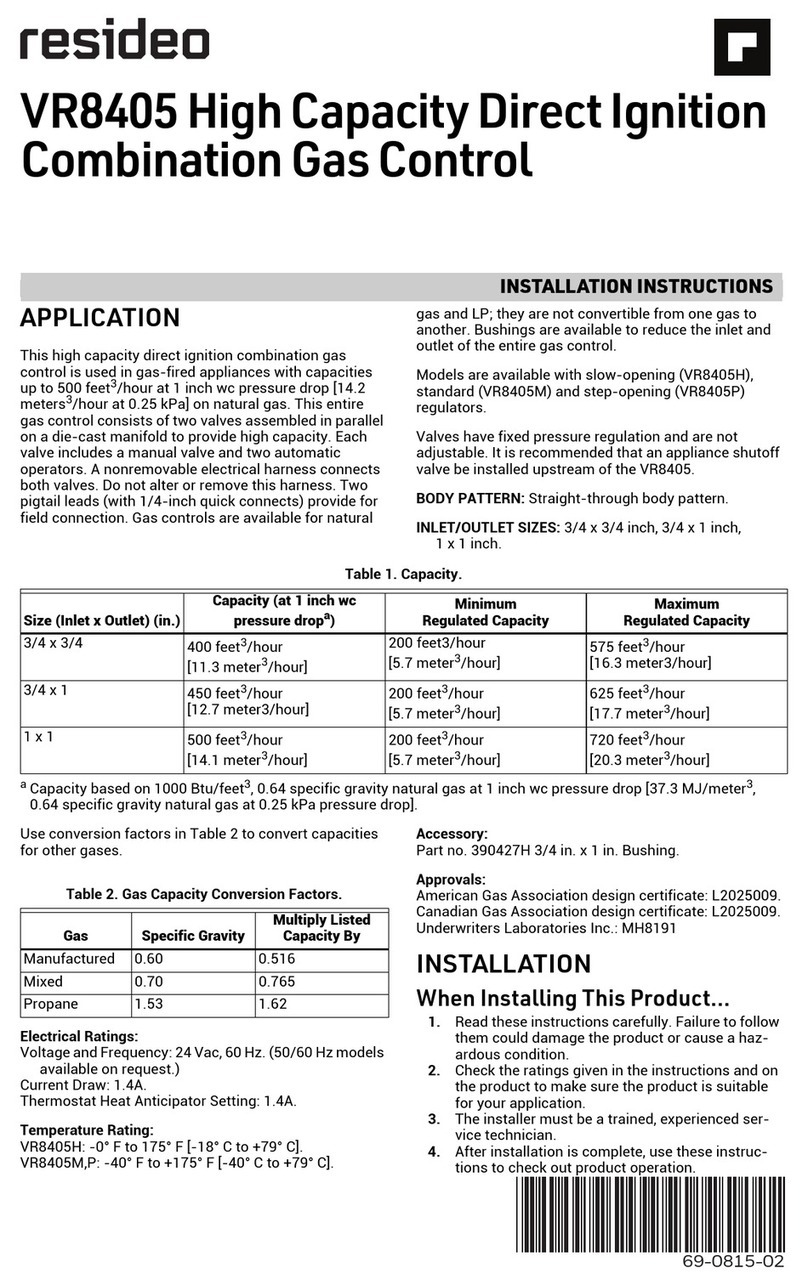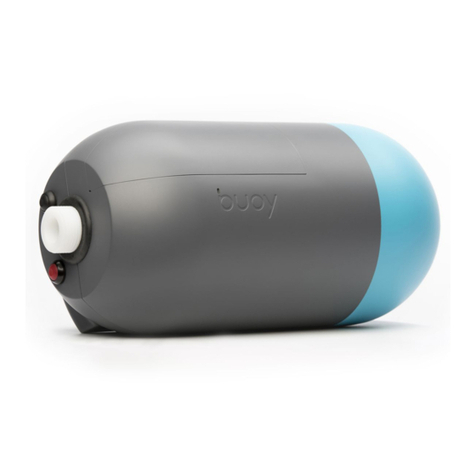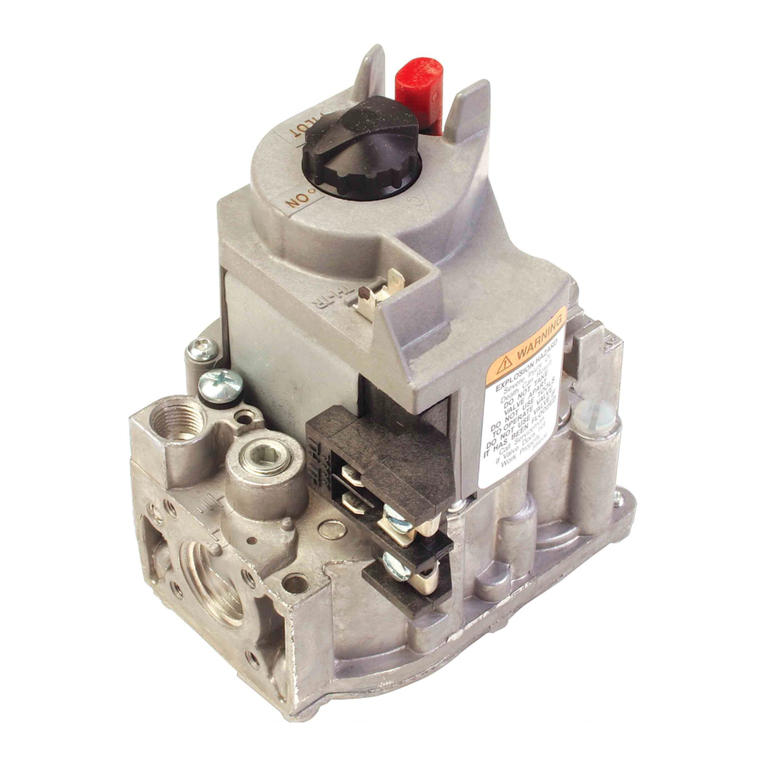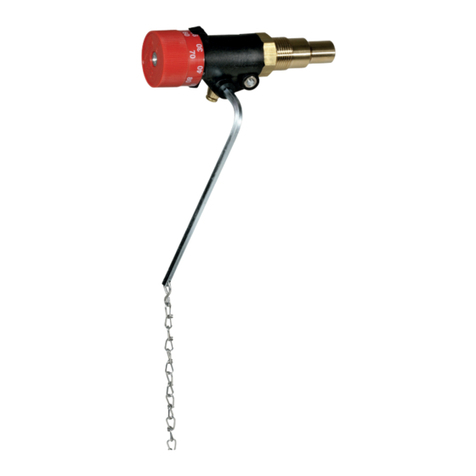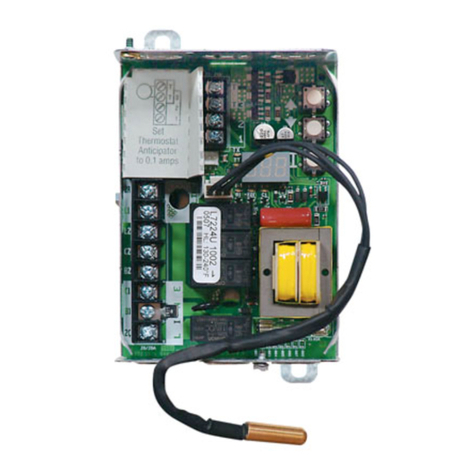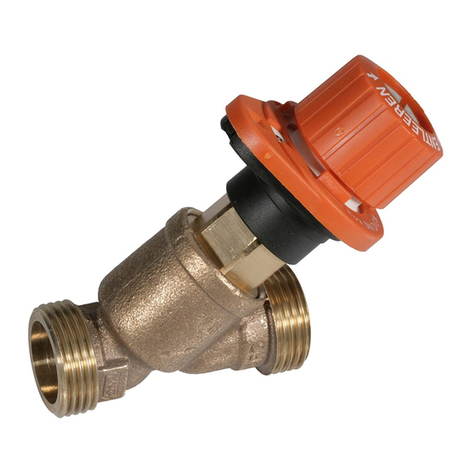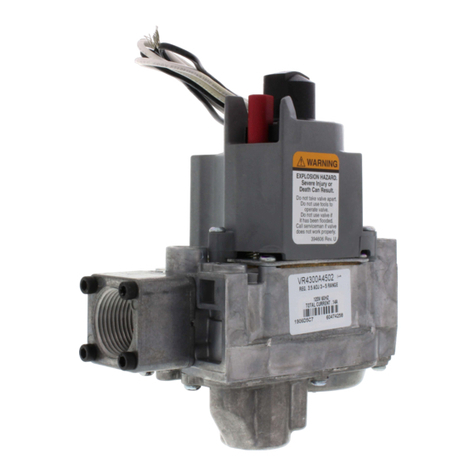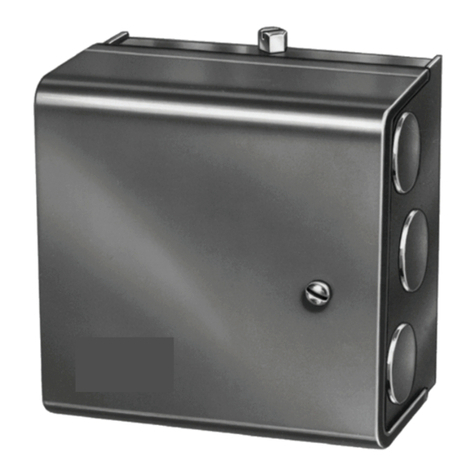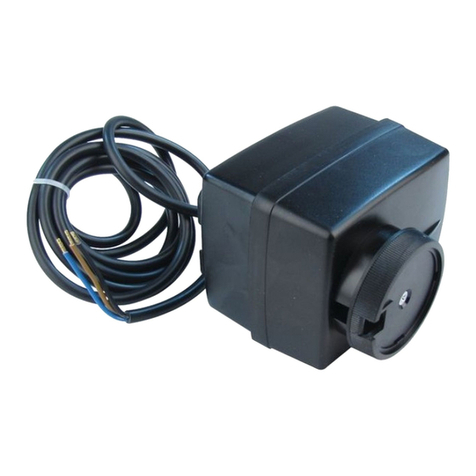
VR4305 DIRECT IGNITION COMBINATION GAS CONTROL
569-0837—01
Perform Gas Leak Test
Fire or Explosion Hazard
Can cause property damage, severe injury, or
death.
Check for gas leaks with rich soap and water
solution anytime work is done on a gas control.
Gas Leak Test
1. Paint all pipe connections upstream of the gas
control with a rich soap and water solution. Bub-
bles indicate a gas leak.
2. If a gas leak is detected, tighten the pipe connec-
tion.
3. Stand clear while lighting main burner to prevent
injury caused from hidden gas leaks that could
cause flashback in the appliance vestibule. Light
the main burner.
4. With the main burner in operation, paint all pipe
joints (including flanges) and gas control inlet and
outlet with rich soap and water solution.
5. If another gas leak is detected, tighten flange
screws, joints, and pipe connections.
6. Replace the part if gas leak can not be stopped.
Check and Adjust Gas Input to Main Burner
1. Do not exceed the input rating stamped on the
appliance nameplate, or manufacturer
recommended burner orifice pressure for the
size orifice(s) used. Make certain the primary
air supply to the main burner is properly
adjusted for complete combustion (refer to the
appliance manufacturer instructions).
2. IF CHECKING GAS INPUT BY CLOCKING THE
GAS METER:
• Make sure that the only gas flow through the
meter is that of the appliance being checked.
• Make certain that other appliances are
turned off with pilot burners extinguished (or
deduct that gas consumption from the meter
reading).
• Convert the flow rate to Btuh as described in
form 70-2602, Gas Controls Handbook, and
compare to the Btuh input rating on the
appliance nameplate.
3. IF CHECKING GAS INPUT WITH A MANOMETER
(PRESSURE GAUGE):
• To connect the manometer, be sure the gas
control knob is in the OFF position before
removing the outlet pressure tap plug.
• When removing the manometer, turn the gas
control knob back to OFF and replace the
outlet pressure tap plug.
• Shut off the gas supply at the appliance
service valve, or at the gas tank for LP gas,
before removing the outlet pressure tap plug
and before disconnecting the manometer
and replacing the outlet pressure tap plug.
• Perform the Gas Leak Test at the outlet
pressure tap plug.
Standard-Opening Pressure Regulator
1. The gas control outlet pressure should match the
manifold pressure listed on the appliance name-
plate.
2. With the main burner operating, check the gas con-
trol flow rate by using the meter clocking method
or check the gas pressure using a manometer con-
nected to the gas control outlet pressure tap. Refer
to Fig. 4.
3. If necessary, adjust the pressure regulator to
match the appliance rating. Refer to Table 4 or 5 for
the factory set nominal outlet pressures and
adjustment setting ranges.
a. Remove the pressure regulator adjustment cap
screw.
b. Using a screwdriver, turn the inner adjustment
screw clockwise to increase or counter-
clockwise to decrease the main burner
gas pressure.
c. Always replace the cap screw and tighten
firmly to safeguard proper operation.
4. If the desired outlet gas pressure or gas flow rate
can not be achieved by adjusting the gas control,
check the gas control inlet pressure by using a
manometer at the inlet pressure tap. If the inlet
pressure is in the normal range (refer to Table 4 or
5), replace the gas control. Otherwise, take the nec-
essary steps to provide proper gas pressure to the
gas control.
Check Safety Shutdown Performance
Fire or Explosion Hazard
Can cause property damage, severe injury, or
death.
Perform the safety shutdown test anytime work is
done on a gas system.
NOTE: Read steps 1 through 7 below before starting
and compare to the safety shutdown or safety
lockout tests recommended for the direct igni-
tion (DI) module. Where they differ, use the pro-
cedure recommended for the module.
1. Turn off gas supply.
2. Set the thermostat or controller above room tem-
perature to call for heat.
3. Watch for ignition spark or for glow at hot surface
igniter either immediately or following prepurge.
See DI module specifications.
4. If module has timed ignition, time the length of the
igniter operation. See DI module specifications.
5. After the module locks out, open gas control knob
and make sure there is no gas flow to the main
burner.
6. Set the thermostat below room temperature and
wait one minute.
7. Operate system through one complete cycle to
make sure all controls operate properly.
